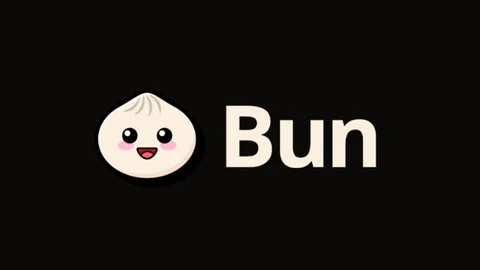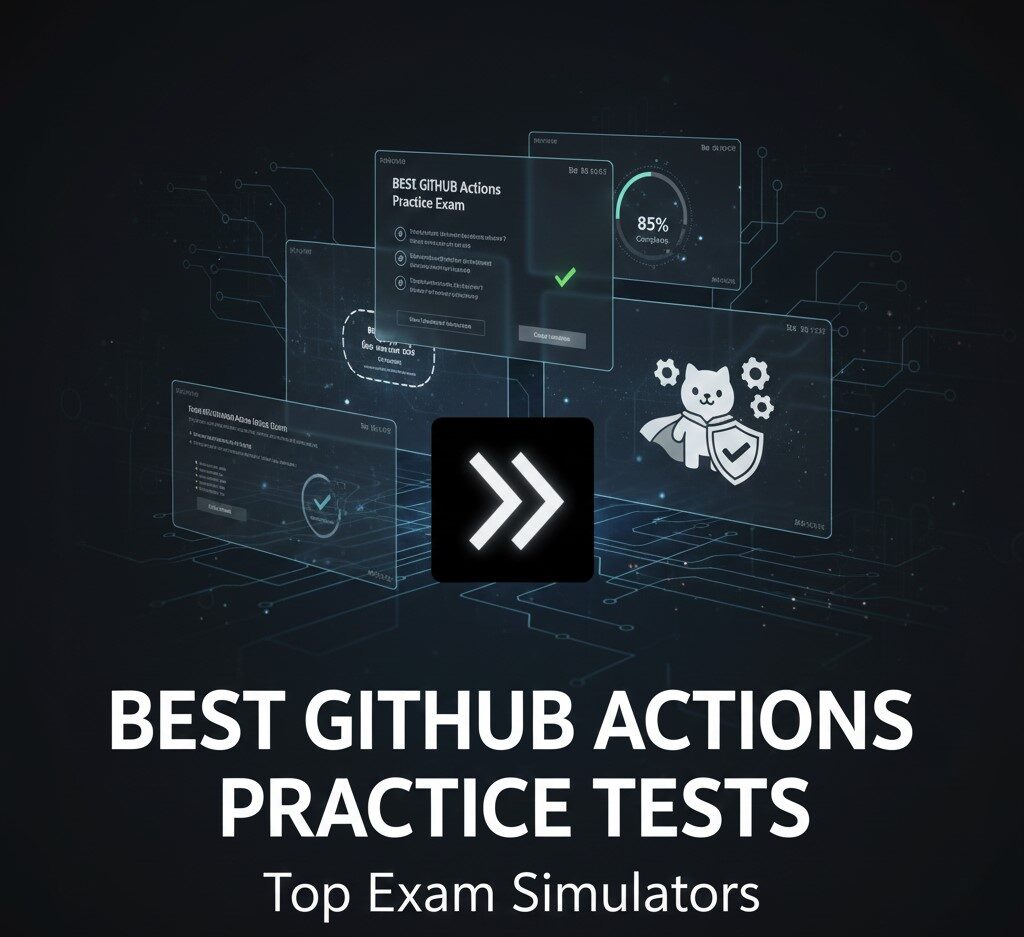Introduction
Ever had that moment when you’re waiting for exam results, palms sweaty, hoping you nailed it? Now imagine seeing your score pop up on the Bun JS Certification Exam—92%, top 10%. You’re not just certified; you’re among the best, with a shiny credential that makes tech recruiters sit up and take notice. That was me a few years back with a different tech cert, and let me tell you, it felt amazing. I’m here to help you chase that same high in 2025 with a practical, no-nonsense guide to acing the Bun JS Certification Exam. I’ve been through the grind, made the mistakes, and learned what works. Ready to score big? Let’s dive in.
Bun JS is blowing up, and for good reason. It’s fast, it’s sleek, and it’s built for developers who want to ship code without the hassle. Whether you’re a coding newbie or a seasoned pro, landing in the top 10% on this exam can set you apart in a crowded job market. I’ll walk you through everything—how the exam works, a study plan that actually sticks, and a few tricks I picked up along the way. Plus, there’s a quirky tip that bumped my practice scores by 15%. Curious? Keep reading.
Why This Certification Is a Big Deal in 2025
Let’s start with the why. Bun JS isn’t just another tool in your coding toolbox—it’s a rocket ship. Built with Zig and JavaScriptCore, it’s up to four times faster than Node.js or Deno, which is why companies like Shopify and Vercel are jumping on board. A Stack Overflow survey from 2024 showed 22% of backend devs dabbling with Bun JS, and experts predict that number could hit 35% by mid-2025. That’s a lot of buzz for a runtime that’s still pretty new.
The Bun JS Certification Exam proves you can tame this beast. And scoring in the top 10%? That’s like having a neon sign that says, “I’m your next star developer.” I chatted with a senior dev at a tech startup, and she told me, “A high Bun JS score means you can optimize our backend without me holding your hand.” With the certification still fresh, getting it now puts you ahead of the pack.
Quick Tip: Want to feel Bun’s speed for yourself? Spin up a basic HTTP server in Bun, then try the same in Node.js and Deno. The difference will light a fire under you to start studying.
Get fully prepared for Bun.js certifications and interviews with the expert-led Bun.js Certification and Interview Preparation course.
Step 1: Get the Lay of the Land
To crush the Bun JS Certification Exam, you’ve got to know what you’re up against. It’s a 90-minute sprint with 60 multiple-choice questions. According to the official guidelines, here’s what it covers:
Core Concepts (20%): How Bun’s runtime works, file system APIs, and process management.
TypeScript Integration (25%): Type safety, decorators, and setting up tsconfig.json.
Performance Optimization (20%): Async operations, memory management, and benchmarking.
Tooling (15%): Using bun install, bun test, bun run, and the bundler.
Web APIs (15%): Fetch, WebSocket, and HTTP servers.
Debugging (5%): Handling errors, reading stack traces, and logging.
About 70% of the questions are hands-on, like, “What does this code spit out?” The other 30% are more theoretical, like, “Why does Bun use Zig?” To hit the top 10%, you need at least 85%, which means missing no more than 9 questions.
I remember my first cert exam—I went in blind and got clobbered. Don’t make that mistake.
Step 2: Map Out an 8-Week Study Plan
Back when I was prepping for my first certification, I thought I could cram it all in a week. Spoiler: I was a mess, barely sleeping and still flubbing the exam. For the Bun JS Certification Exam, you need a plan that’s realistic and keeps you sane. Here’s an 8-week roadmap that worked for me and can work for you:
Weeks 1-2: Get the Basics Down
What to Focus On: Bun’s setup, architecture, and core APIs.
To-Do:
Install Bun and run a simple “Hello, World” server. It’s easier than you think.
Dig into the official Bun docs, especially the “Getting Started” and “Runtime” sections.
Watch Fireship’s Bun JS video on YouTube—it’s short, fun, and sticks in your brain.
Goal: Figure out what makes Bun special and how it stacks up against Node.js or Deno.
Weeks 3-4: Nail TypeScript and Tools
What to Focus On: TypeScript and Bun’s built-in goodies like the package manager.
To-Do:
Build a small REST API using TypeScript with Bun’s HTTP server.
Play around with bun install, bun test, and bun run.
Goal: Feel at home with Bun’s TypeScript-first vibe and its tools.
Weeks 5-6: Tackle the Tough Stuff
What to Focus On: Performance tricks, Web APIs, and debugging.
To-Do:
Compare a Bun app’s speed to Node.js using a tool like wrk.
Code a WebSocket chat app to get comfy with Bun’s Web APIs.
Learn to spot common bugs, like unhandled promises.
Goal: Understand how Bun shines in real-world projects.
Weeks 7-8: Practice Like It’s Game Day
What to Focus On: Mock exams and fixing weak spots.
To-Do:
Take Gururo’s Bun JS Certification practice tests and aim for 80% or better.
Go over your wrong answers and brush up on those topics.
Hop into the Bun Discord community to swap tips with other devs.
Goal: Walk into the exam feeling like you’ve already aced it.
Fun Fact: A 2023 study showed folks who practiced with mock exams scored 12% higher than those who didn’t. Don’t sleep on practice!
Step 3: Get Hands-On with Key Topics
The Bun JS Certification Exam loves to test how well you can use Bun, not just talk about it. Here are three big areas to focus on, with exercises to make the knowledge stick:
1. Performance Optimization
Bun’s all about speed, and the exam will quiz you hard on it. Its Zig-based runtime and JavaScriptCore engine make it scream compared to other runtimes.
Try This:
Write a script to read a 1GB JSON file using Bun’s fs module and Node’s fs module.
Time them both with console.time().
Tweak the Bun script to use streams and cut down on memory use.
This will get you ready for questions like, “How does Bun’s streaming API boost performance?”
2. TypeScript-First Development
Bun plays nice with TypeScript, but you need to know your stuff—think tsconfig.json, type guards, and decorators.
Try This:
Build a REST API with endpoints for creating, reading, updating, and deleting data.
Use TypeScript interfaces to define your request and response shapes.
Add a decorator to log how long each endpoint takes.
This will prep you for questions like, “What’s the right tsconfig.json setting for Bun’s ESM support?”
3. Web APIs and Servers
Bun’s Web API support, like Fetch and WebSocket, is a big deal on the exam.
Try This:
Code a simple chat app using Bun’s WebSocket API.
Add error handling for when connections drop.
Test it with a couple of clients to see it in action.
This will help you answer questions like, “How’s Bun’s WebSocket setup different from Node.js?”
My Secret Trick: Here’s that 15% score booster I promised. I started recording myself explaining Bun concepts out loud, like I was teaching a friend. It forced me to really get the material and spot where I was shaky. Try it—it’s weirdly effective.
Step 4: Dodge These Rookie Mistakes
Even the best coders can trip up. Here’s what to watch out for:
Thinking Bun = Node.js: Bun’s got its own APIs, like Bun.serve. Don’t assume Node.js tricks will work.
Skimping on TypeScript: The exam leans hard into TypeScript. Don’t skip advanced stuff like conditional types.
Skipping Practice Tests: The real exam’s questions are sneakier than the docs. Gururo’s Bun JS Certification practice tests are a lifesaver for getting the feel of it.
Cramming Last Minute: Eight weeks of steady study beats one week of panic. Trust me, I learned this the hard way.
Wise Words: “The only way to eat an elephant is one bite at a time.” —Creighton Abrams. Break your prep into chunks, and you’ll be golden.
Step 5: Rock Exam Day
You’ve put in the work—now it’s time to shine. Here’s how to nail the Bun JS Certification Exam:
Read Every Word: Questions can be tricky, with tiny errors in code snippets. Slow down and check twice.
Keep an Eye on the Clock: Aim for about 1.5 minutes per question. If one’s stumping you, flag it and move on.
Guess Smart: Can’t decide? Rule out the obviously wrong answers to up your odds.
Stay Cool: Feeling stuck? Take a deep breath. You’ve prepped for this.
Real Talk: Halfway through my last cert exam, I hit a wall and thought I’d blown it. Then I remembered a mentor’s advice: “Just do what you know.” I skipped the tough questions, crushed the ones I was sure of, and circled back. It worked. You’ve got this.
Wrapping It Up
Landing in the top 10% on the Bun JS Certification Exam in 2025 is a big deal, but it’s totally doable. Get to know the exam inside and out, stick to a solid 8-week study plan, practice with real code, steer clear of common traps, and bring your A-game on exam day. This isn’t just about a piece of paper—it’s about showing the world you’re ready to lead the charge in JavaScript’s future.
Don’t wait. Download Bun, poke around the docs, and try a practice test today. Every little step gets you closer to that top 10% score. Like Douglas Adams said, “Don’t Panic!” You’re building skills that’ll carry you far. So, what’s stopping you? Go out there and make 2025 your year!
Ready to level up your Bun.js skills? Our Bun.js Certification and Interview Preparation program is the perfect resource to help you land your dream job.
FAQs
What makes a good Bun JS practice test?
Relevant questions, exam-like setup, clear explanations, and full coverage of exam topics.
How many tests should I take?
Shoot for 2-3 full ones, plus smaller quizzes for shaky areas.
How often should I take Bun JS practice tests?
for one full test every 1-2 weeks, plus daily mini-quizzes to reinforce weak areas.
Can I trust free Bun JS practice tests?
Yes, for basics, but paid options like Gururo offer more accurate exam simulations.
What if I fail a practice test?
No sweat! Review explanations, focus on weak spots, and try again to build mastery.
Do practice tests include coding exercises?
Top ones, like Gururo’s, often include code interpretation and scenario-based tasks














